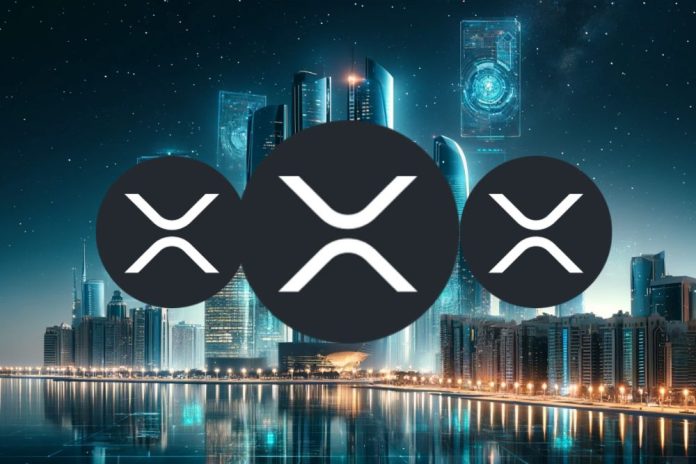In a recent post, Edo Farina, CEO of Alpha Lions Academy and a prominent figure in the cryptocurrency community, provided a compelling perspective on Ripple’s strategic positioning and the potential underlying intent behind XRP’s development.
His tweet highlights Ripple’s recruitment strategy. The company reportedly employs talent from top-tier institutions, including the Federal Reserve Bank of New York, Goldman Sachs, Apple, Google, NASA, the National Security Agency (NSA), and Twitter, as well as early Bitcoin developers.
Farina’s message conveys the belief that XRP could be part of a much larger operation, perhaps even at a level of coordination akin to a “military operation.”
This tweet offers a valuable viewpoint for the crypto community. Understanding it requires a deeper exploration of the individuals associated with Ripple, the history of its CTO, David Schwartz, and the broader implications for XRP’s potential role in the financial and technological sectors.
#Ripple employed people from the New York FED, Goldman Sachs, Apple, Google, NASA, the NSA, Twitter, and early Bitcoin developers.
David Schwartz filed a patent similar to #Bitcoin in 1988 and was a contractor for the NSA. $XRP is a Military Operation, the final product. pic.twitter.com/63XJKRoefF
— EDO FARINA 🅧 XRP (@edward_farina) November 4, 2024
Ripple’s High-Profile Hires
As described by Farina, Ripple’s recruitment strategy indicates a deliberate effort to bring on individuals with experience in diverse, influential institutions.
This approach suggests that Ripple seeks to leverage insights from finance, government, tech, and security sectors, which could provide an advantage in navigating regulatory complexities and optimizing blockchain technology for broad, cross-industry applications.
Key hires from the New York Fed and Goldman Sachs, for instance, suggest a focus on gaining institutional insights, particularly in areas related to monetary policy and global finance.
Former employees from tech giants like Google, Apple, and Twitter bring engineering expertise and knowledge of mass-market digital platforms that could support Ripple’s ambitions to expand the adoption of XRP as a global liquidity tool.
The inclusion of former NASA and NSA employees raises additional intrigue, as these individuals likely bring experience in advanced cryptographic systems and security protocols. Such expertise is invaluable to Ripple’s goal of creating a secure, resilient payment infrastructure that is scalable and compliant with regulatory standards.
We are on twitter, follow us to connect with us :- @TimesTabloid1
— TimesTabloid (@TimesTabloid1) July 15, 2023
David Schwartz and Ripple’s Foundations
David Schwartz, Ripple’s Chief Technology Officer, has been a driving force behind the technical development of XRP and the XRP Ledger (XRPL).
In his tweet, Farina notes that Schwartz filed a patent in 1988 for a technology that is similar to the Bitcoin concept, which would not emerge until two decades later.
While it remains unclear how directly this patent influenced the development of blockchain, it highlights Schwartz’s early interest in decentralized ledger technology, predating even the earliest explorations of digital currencies.
Schwartz’s background includes work as a contractor for the NSA, which has fueled speculation about the origins and purpose of Ripple’s technology.
His NSA experience potentially provided him with expertise in secure communication protocols, cryptographic frameworks, and distributed computing—capabilities that align well with the demands of developing a secure, scalable blockchain network like XRPL.
Given these elements, it’s unsurprising that some observers, like Farina, view Schwartz’s involvement in Ripple as an indication of a larger strategic design for XRP’s role in global finance.
XRP as a “Military Operation”?
In referring to XRP as a “Military Operation,” Farina presents a hypothesis that suggests XRP could be part of a larger coordinated effort, possibly involving government or military stakeholders.
While this claim is speculative, it aligns with a popular theory within the cryptocurrency community that XRP and Ripple’s technology may play a central role in future digital financial infrastructure, particularly as central banks worldwide consider implementing Central Bank Digital Currencies (CBDCs).
XRP’s architecture, designed to facilitate rapid, cross-border payments at minimal cost, has garnered interest from financial institutions worldwide and led to strategic partnerships.
Farina’s assertion implies that XRP’s utility could extend beyond standard commercial use, potentially serving as a foundational tool for intergovernmental or cross-national transactions within a tightly controlled framework.
Moreover, Ripple’s emphasis on regulatory compliance and transparency, as well as its interactions with regulatory bodies, reinforces the idea that XRP is designed to operate within a regulated environment rather than outside it.
Disclaimer: This content is meant to inform and should not be considered financial advice. The views expressed in this article may include the author’s personal opinions and do not represent Times Tabloid’s opinion. Readers are urged to do in-depth research before making any investment decisions. Any action taken by the reader is strictly at their own risk. Times Tabloid is not responsible for any financial losses.
Follow us on Twitter, Facebook, Telegram, and Google News


